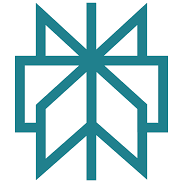So, Is Print on Demand Worth It?
Yes — print on demand is still worth it in 2025. It’s one of the lowest-risk ecommerce business models available, with minimal upfront costs, no need for inventory, and wide customisation potential.
With the right ecommerce platform and a solid marketing strategy, it’s possible to build a print on demand business around a specific audience, product category, or niche.
The global print on demand market is growing rapidly. It’s projected to reach $87.1 billion by 2033, driven by increased demand for personalised products, creator-led brands, and ecommerce scalability.
While some segments are saturated, success comes down to targeting underserved niches, understanding customer preferences, and creating a unique brand that offers more than generic designs.
What Is Print on Demand?
Print on demand (POD) is a business model where a third-party supplier prints and ships products on behalf of a seller, only after a customer places an order. There’s no need to purchase inventory in advance or manage logistics.
How the Process Works:
| Step | Action |
|---|---|
| 1 | Create a design (text, graphics, art, etc.) |
| 2 | Upload to a print on demand platform (e.g. Printful, Printify) |
| 3 | Sync with an ecommerce platform (e.g. Shopify, Etsy, Amazon) |
| 4 | Customer places an order |
| 5 | Supplier prints and ships the item directly to the customer |
| 6 | Seller earns the profit margin between base cost and retail price |
This model reduces financial risk and simplifies operations, making it ideal for small businesses, independent creators, and niche brand builders.
Is Print on Demand Profitable?
Print on demand can be profitable with the right approach. While margins are typically lower than traditional retail or dropshipping, there are fewer returns, no inventory storage costs, and less overhead.
Typical Financials in 2025:
| Metric | Low End | High End |
|---|---|---|
| Average Sale Price | £18 | £35 |
| Base Product Cost | £10 | £20 |
| Net Profit Per Sale | £5–£10 | £12–£15 |
| Monthly Orders (starter store) | 30–150 | |
| Monthly Profit Potential | £150–£2,000+ |
Profit depends on targeting high-conversion niches, optimising listings, using strong visuals, and choosing products with healthy markups.
Pros and Cons of Print on Demand
Pros:
- Low Startup Costs – No bulk inventory or upfront stock needed
- Fast to Launch – Products can be created and listed in days
- Scalable – Add new products or designs easily
- Automated Fulfilment – Printing, packing, and shipping handled by suppliers
- High Customisation – Niche-specific, personalised, or seasonal product options
Cons:
- Lower Margins – Base costs can eat into profits
- Limited Control – Quality and delivery handled by third-party
- Shipping Delays – Longer fulfilment times, especially from overseas suppliers
- Saturation – Generic designs don’t perform in crowded categories
- Platform Fees – Additional charges on marketplaces like Etsy or Amazon
POD works best when treated like a long-term ecommerce strategy, not a quick win.
Best-Selling Print on Demand Products
Certain product types consistently perform well due to their broad appeal, giftability, and customisation potential.
| Product Type | Reason for Demand |
|---|---|
| T-Shirts | Easy entry, widely used |
| Hoodies | Higher ticket, strong gifting appeal |
| Mugs | Popular for birthdays, holidays, or work gifts |
| Wall Art | Low return rate, suitable for home décor |
| Tote Bags | Affordable and rising in eco-conscious segments |
| Phone Cases | Custom lifestyle accessory with repeat purchases |
Focus on proven product types first. Expand only after building traction and collecting data.
Choosing a Print on Demand Platform
There are two types of print on demand companies:
- Marketplaces – Offer built-in traffic (e.g. Etsy, Amazon Merch)
- Suppliers – Handle fulfilment but require seller-driven marketing (e.g. Printify, Printful)
Platform Comparison Table:
| Platform | Type | Key Benefits | Key Drawbacks |
|---|---|---|---|
| Etsy | Marketplace | Built-in traffic, strong POD demand | Fees, high competition |
| Shopify | Supplier-connected | Full brand control | Requires marketing and setup |
| Amazon Merch | Marketplace | Massive exposure | Approval process, upload limits |
| Redbubble | Marketplace | Easy setup, no ads needed | Lower margins, lower quality control |
| Printify / Printful | Supplier | Custom branding, flexible product range | Seller must drive all traffic |
For new sellers, Etsy + Printify is often the best mix of simplicity and scalability.
What Makes POD Worth It: Key Success Factors
Success with print on demand isn’t based on uploading trendy slogans or copying viral memes. Instead, it relies on solid ecommerce fundamentals:
1. Target Specific Niches
Avoid broad markets like “funny t-shirts” or “coffee lovers.” Instead, go for detailed micro-niches:
- Electricians who love fishing
- Dog groomers with sarcastic humour
- Teachers into astrology
- Single dads who work out
Niche targeting improves ad performance, SEO relevance, and emotional buying triggers.
2. Design for Identity
Customers buy POD products to express something personal — their profession, values, or lifestyle. The design should feel like it was made just for them.
3. Use High-Quality Visuals
Mockups influence conversion rates. Poor images can kill great designs.
Invest in mockup generators like Placeit, or use AI tools (e.g., Midjourney + Photoshop) for more realistic previews.
4. Test, Track, and Scale
Run small-scale tests on 5–10 products. Use the following process:
- Track performance (click-throughs, sales, feedback)
- Cut what doesn’t work
- Scale what does (add colours, bundles, variations)
Hidden Costs to Consider
Even though print on demand is a lean model, some expenses can add up if not tracked.
| Cost Area | Estimated Monthly Spend |
|---|---|
| Design Software or AI Tools | £10–£50 |
| Paid Mockups / Image Tools | £5–£100 |
| Advertising (if used) | £50–£300+ |
| Platform Fees (Etsy, Shopify) | £10–£200 |
| Branding / Domain / Hosting | £10–£40 |
Planning for these costs improves profit margins and keeps the business sustainable.
Common Print on Demand Mistakes
Avoiding common pitfalls makes the difference between failing and building a consistent revenue stream.
Mistakes to Avoid:
- Selling in generic, saturated niches
- Poor product mockups or low-resolution designs
- Ignoring customer reviews and delivery times
- Using unreliable suppliers
- Relying entirely on organic traffic
Print on Demand Trends in 2025
The print on demand space continues to evolve. Here are the key trends shaping the market right now:
- Personalisation is in high demand — names, dates, and photos increase conversion rates
- AI-generated art is becoming common for creating rapid design variants
- Eco-friendly products like organic cotton tees or recycled tote bags are gaining popularity
- Bundles (e.g. mug + coaster sets) are helping sellers increase average order value
- Evergreen niches like pets, fitness, careers, and parenting remain top sellers
Sellers who align with these trends are more likely to grow consistently and build brand value over time.
Conclusion: Is Print on Demand Still a Viable Business in 2025?
Yes — print on demand remains a viable, scalable business model in 2025. It’s not a shortcut to instant success, but with the right strategy, it can become a long-term revenue stream with very little operational overhead.
POD is ideal for entrepreneurs who want to:
- Sell online without holding inventory
- Build niche brands
- Test product ideas quickly
- Leverage marketplaces like Etsy or Amazon
- Monetise communities or audiences
The key is to approach it with the mindset of a business owner — focused on customer experience, niche selection, and scalable systems.




